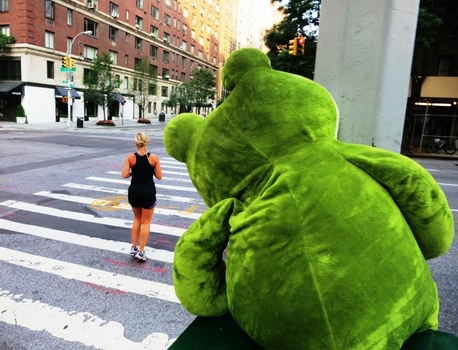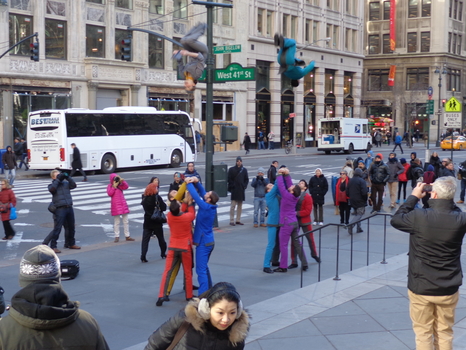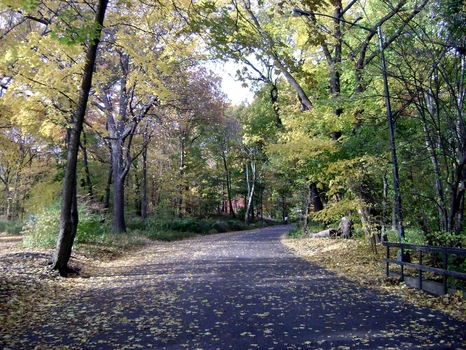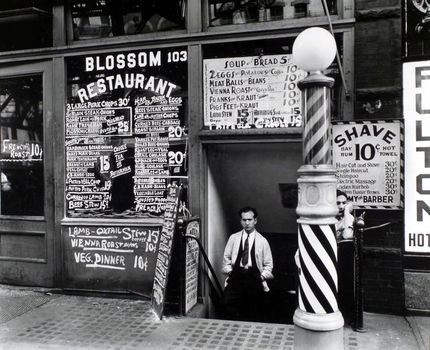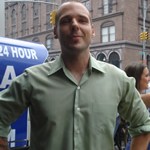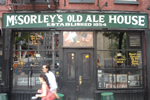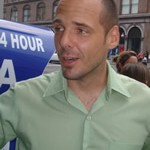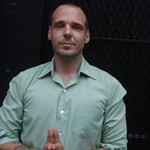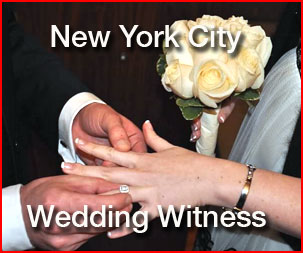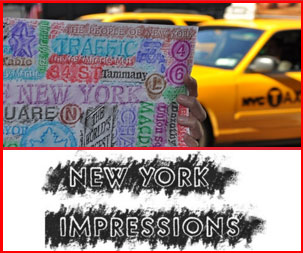Ask a New Yorker: What hospital were you born in?
Eric: Kings County Hospital; 1970, August 26th around 8:00am.
Ask a New Yorker: So that would make you a native New Yorker?
Eric: Yep. I’m a native New Yorker, fourth generation. My great grandmother
on my mother’s side settled here on the Lower East Side in the 1870’s
from the Ukraine and my great grandmother on my father’s side arrived from Sicily
in the late 1880’s; they settled in Little Italy, then know as the Five
Points . Both came at a very early age, like in their early teens. It is hard
to imagine their experience. They both married someone much older, had a bunch
of kids, and the rest is history. We have survived in this community for 130
years. http://r2.gsa.gov/fivept/wifp.htm
Ask a New Yorker: So what do you do?
Eric: Well, l basically I run a small community media-slash-tourism-slash-historic
preservation organization. We’re expanding now. Looking to become non-profit
and filter money back into the Lower East Side, to the people and organizations
who fall between the cracks.
We run free public walking tours (http://LowerEastSideTours.org);
we do all sorts of activism and research while trying to accumulate as much
information as possible on the historic value of the Lower East Side. I originally
focused on the East Village (http://East-Village.com),
which many people do not realize is technically a neighborhood within the Lower
East Side — which spans East 14th Street to the Brooklyn Bridge. East-Village.com
offeres arguably the most thorough time line of NYC/LES/EV history you can find
anywhere, among a lot of other valuable data. This is something I would like
to expand on. Researching and recording history, then sharing it with the public.
Covering the rest of the Lower East Side was an organic next-step.
So the idea is public education and trying to reintroduce how important the
Lower East side is to American history. A lot people take it for granted. This
is truly one of the most historic neighborhoods in the country. It’s the
original melting pot which set the template for the modern day, working class,
multi ethnic America that we have today. Unfortunately, not as recognized as
it should be. Many people associate the Lower East Side with bagel and pickle
stores, and the East Village with weirdos and crime; which we have had our share
of… but fail to realize the layers and layers of rich history.
Ask a New Yorker: I’m not sure if the concept boosterism
came from Lower East Side, but you really know your stuff. What other movements
grew out of the Lower East Side?
Eric: Just off the top of my head: Labor
Unions /Labor Rights and women’s
rights/the uffrage movement. Susan B. Anthony lived a few blocks from where
we are sitting and her offices were across the street from here. Also, organized
crime, arguably. Also, in entertainment, everything from tap dancing to the
Beat generation to Punk Rock. The Latino Arts & culture of the 50’s, 60’s
and 70’s, like Loisaida and Nuyorican arts and politics. It goes on forever.
Also lots of literary artists and musicians have lived here. The gay and Lesbian
community experienced lots of advances here; Bebop, Fluxus Art, Abstract Expressionist
painters; all sorts of housing protection movements; we housed Yiddish Theater
here at the turn of the century and then Vaudeville. And of course contemporary
theater; everything from Hair, Jesus Christ Super Star and a Chorus Line, to
Rent, Little Shop of Horrors and STOMP premiered here in the East Village…
We can go on for a long time.
Ask a New Yorker: That’s a lot of movement from the Lower East Side.
Eric: Well it all really comes out of poverty and corruption; and as far as
the entertainment field, finding ways to entertain yourself because you’re
broke, finding ways to be creative. Out come people like George Gershwin and
James Cagney and all those old greats. Irving Cesar attended the Third Street
Music School Settlement; Yip Harburg, who wrote the lyrics to the Wizard of
Oz attended PS 63, and so on. Also, this same poverty spawned great political
and social ideals. People like Emma Goldman and Abby Hoffman and all these other
greats who throughout history were sharing ideas here in the area and launching
all sorts of movements that affected things around the globe. We have been a
center of radical arts and activism for over a century. We have served as headquarters
for communists, Nazi sympathizers, international spies, organized criminals,
home-grown terrorist organizations, socio-political groups, anarchists, YIPPIE’s;
the list goes on and on… it is truly incredible.
Ask a New Yorker: So you’ve obviously seen lots of changes. Give us a
little glimpse of the 70’ and 80’s.
Eric: The 70’s and 80’s were totally different from the late 90’s
and where we are now. We’re standing in the gentrification capital of
the world. One of the hottest real estate tickets in New York City. Literally
in my life time twenty-to-thirty years ago, the East Village, and more specifically,
Alphabet City, had sometimes rows of abandoned buildings. I remember as a kid
being at Tompkins
Square Park and seeing a line of people waiting for heroine out in the open
— just like you and I waiting to get into a movie theater. History records
that it was known as a “full-service heroine center”. It was very
dangerous then to be a police officer then. Two of my uncles served as officers
and detectives in these precincts during that time. In 1974 two police officers
were gunned down by the Black Liberation Army on Avenue B. The neighborhood
was really self-governed for a few decades. That’s really the history
of the Lower East side. Your group can claim an abandoned building for itself
and operate for years without being bothered. A lot of arts came out of this
time period as well. That’s what made this gentrification so difficult
and why there where so many clashes with the police and the city in the 1980’s
and early 90’s, when “they” tried to “take it back”.
There are statistics that show by the 1960’s there were 1500 street gangs active
on the Lower East Side, by the 1970’s we had the number one retail heroine trade
in the world. By the 1980’s up to 30% of Alphabet City was abandoned and there
were an average of 25 arson fires a month. I show pictures on our tour; people
living or visiting here now are absolutely shocked.
Ask a New Yorker: Do you ever feel the rock fever syndrome like you need to
just leave, get out of the city and move away?
Eric: More or less I lived in NYC for most of my life. I went to NYC Public
Schools. But I spent a few months here and there in my 20’s. I was in the military
at one time, then toured with a band. I also tried to give it a go in Paris,
St Croix and Honolulu. Probably three destinations that people would love to
live in. I had the chance. I tried it and I came back to New York. These are
my roots. I love it. I can’t get away from it. I’m in love with
the city.
Ask a New Yorker: So what did you do in Paris, Saint Croix and Hawaii?
Eric: Just expanding. Or trying to. Seeing what is out there. I was lucky enough
to have the opportunity. In the case of St. Croix; I went crazy one day, sold
all my stuff, and bought a one way ticket. I mostly stayed in a famous author’s
small beach house with some hippie/back-packer friends. I basically ran out
of cash while expanding and my mom bailed me out with a ticket home. That was
a long time ago.
Ask a New Yorker: We’re sitting in a true landmark. Tell me a bit about
McSorley’s.
Eric: This is the oldest continuously operating bar in New York City. It was
established in 1854. It’s an old Irish pub; think Boss Tweed in those
days of Tammany Hall.
They survived Prohibition. They served alcohol in the back room. It was women
only until the the 1970’s when they were sued and taken to the State Supreme
Court. Interestingly, one of the owners was a woman by default; her father left
the bar to her when he died. She actually never stepped foot in the place, as
a promise to her father. They celebrated their 100th anniversary while she was
owner and she did not even attend the party. Abe Lincoln and Teddy Roosevelt
drank here, as well a slew of celebrities and political figures. Houdini’s
hand cuffs are hanging over the bar, and there are lots of memorabilia on the
walls.
Ask a New Yorker: Abe Lincoln…
Eric: Lincoln gave a very important speech in 1860 across the street in Cooper
Union’s Great Hall. It was his Might Makes Right speech condemning slavery.
It basically secured his Republican party nomination. After the speech he came
here for a drink. http://showcase.netins.net/web/creative/lincoln/speeches/cooper.htm.
Ask a New Yorker: I need to spend some more time with you.
Eric and I exit McSorley’s and right across the street is a new high rise going
up.
Ask a New Yorker: What’s this going up?
Eric: This is the site of an old building that Cooper Union had constructed
over a hundred years ago. It once housed the 27th Regiment of the National Guard,
who saw a lot of action in the 19th century. Cooper Union, this year, tore down
that old building to make way for the first LEED standard, environmentally-friendly,
green academic building in all of New York City (http://www.cooper.edu/cubuilds/index.html).
It will feature a mesh skin which will help the building breath; and certain
parts of the structure will be built to adjust to the environment and the time
of day and the earth’s rotation and all sorts of crazy stuff. I think,
in times of trouble, the building turns into a mechanical reptile or car or
something…
Check out http://east-village.com and
http://lowereastsidetours.org for
more information or to contact Eric.


